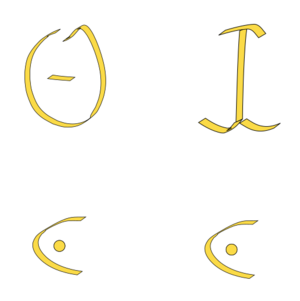Suglogh language
| Suglogh | |
|---|---|
| Sughlogh | |
 | |
| Pronunciation | [suːʜ.ˈloʜ]; [suːʜ.ˈlo]; (Dialectal; "g" is not in Standard Suglogh) [suːɡ.ˈlo] |
| Created by | Connor Hetner |
| Date | In Development |
| Users | None |
| Purpose | Constructed language
|
| Suglogh alphasyllabary | |
| Language codes | |
| ISO 639-3 | None (mis) |
| Glottolog | None |
The Proto-Cotter Menace language (not to be confused with the Cotter Menace language) or the Suglogh language is a constructed language created by Connor Hetner.
History
This language first came to be in the year 2021. Connor Hetner, the creator of the language, first thought of it as the indigenous language of Cotter Menaceland. Some of the first words were created in 2021 for the document "Cotter Menace History."
In 2022, Connor Hetner first started creating the language alongside Joe Terronez. He and Joe started to devise more complex words such as "Chehetciin" and "Suglogh." Still, the language did not have any phonology, syntax, or grammar set. This all changed in late 2022 when Connor Hetner created the phonology for the Suglogh language and some early syntax. After the creation of phonology, he completed the early syntax and grammar so he could; move on to the next step: the lexicon.
As of now, Connor Hetner is in the process of creating the lexicon and is still waiting to evolve the phonology and grammar. He says, "I plan for this language to be finished in a few years," not giving an exact date.
Phonology
The Suglogh language has 36 phonemes, including consonants and vowels. That number can be broken into 24 consonants and 12 vowels. What makes Suglogh unique from other languages, constructed or natural, is that it includes non-pulmonic consonants — which are rare. It also has another consonant that is quite rare, the voiceless pharyngeal trill; "/ʜ/."
| Bilabial | Labiodental | Dental | Alveolar | Palato-alveolar | Retroflex | Palatal | Velar | Pharyngeal | Glottal | |
|---|---|---|---|---|---|---|---|---|---|---|
| Nasal | m | n | ||||||||
| Stop | p b | t d | c | k kʼ | ||||||
| Affricate | t͡ʃ d͡ʒ | |||||||||
| Fricative | f v | θ | s | ʒ | ʂ | ç | h | |||
| Approximant | ɹ | j | ||||||||
| Trill | r | ʜ | ||||||||
| Lateral approximant | ɭ |
| Front | Back | |
|---|---|---|
| High | i iː | u uː |
| Near-High | ɪ | |
| High-Mid | e eː | o oː |
| Near-Low | æ | |
| Low | a aː |
Syntax
The Suglogh language's syntax is predominantly head-final. The sentence structure is "SOV" or "Subject, Object, Verb." Adjectives go before nouns. Nouns go before postpositions (not prepositions since they are not present in Suglogh). The possessor goes before the possessee. The lexical verb goes before the auxiliary verb.
- SOV
- Adjective-noun
- Noun-postposition
- Possessor-possessee
- Verb-auxiliary verb
Grammar
Suglogh grammar is very primitive. Currently, the tense and plurality systems have been devised, though they are quite simple.
- Unmarked Singularity; "meš" added for plurality.
- Present Tense: Unmarked
- Past Tense: Marked with the verb "to finish"
- Future Tense: Marked with the verb "to go"
- Perfective Aspect: Marked with the tense verb
- Imperfective Aspect: Unmarked
Writing system
The Suglogh language can be written in two ways: the Latin alphabet or the Suglogh alphasyllabary. Currently, the Suglogh alphasyllabary is not commonly used, but it will likely be used when the language is relatively complete. None of these ways of writing are completely phonetic and may require some parts to be inferred. It is also expected that these writing systems will change as the language evolves.
| Suglogh Latin alphabet | |
|---|---|
| Uppercase | A B C Ç D E Ə F H GH I J J̌ K L M N O P R S Š T U V Y Ž Þ |
| Lowercase | a b c ç d e ə f h gh i j ǰ k l m n o p r s š t u v y ž þ |
